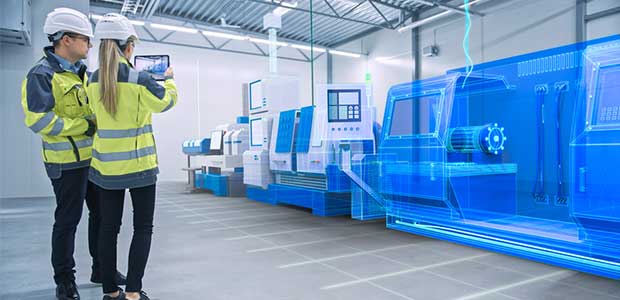
Surprising Technology Can Prevent Dropped Object Injuries
Dropped objects may look innocuous, but due to the laws of gravity, they are incredibly dangerous.
- By Drew Youpel
- Apr 20, 2021
One accidentally dropped hammer can hospitalize a slew of employees, shutting down production on-site, ruining your injury rate and damaging your reputation among your colleagues. Plus, frequent dropped object claims, even if minor, may have a major impact on your workers compensation premium.
Dropped object accidents aren’t just common (and expensive), they are also preventable due to rapidly developing technologies.
What Are Dropped Objects?
Dropped or falling objects fall into a single injury category, but a dropped object can be anything from a chainsaw to an empty plastic bucket. Of course, size, weight and mechanism all play a role in the repercussions of an incident. However, even a light, innocuous object like an empty bucket or a bolt can be dangerous.
The severity of a dropped object incident also depends on what category it occupies: static or dynamic. A static dropped object falls from a resting position under its own weight, e.g., holding a bucket and accidentally dropping it. A dynamic dropped object breaks free thanks to the applied force of another object, e.g., a traveling load knocked by the wind. Both categories are dangerous, but dynamic objects can come with more force.
There are also two ways for a dropped object to make contact: direct impact and deflection. A direct impact is a clear line from the starting point to the impact point: nothing gets in their way. An example would be dropping a tool off scaffolding and watching it fall to the ground, unimpeded. A deflection impact diverts an object away from that path, turning the object into a projectile. If the tool you dropped off scaffolding hits one of the support bars on the scaffold, the tool can then become a projectile.
Dropped objects aren’t just a hazard because they bust up tools and damage equipment: they can cause personnel injuries and fatalities both directly and indirectly. According to the Bureau of Labor Statistics, 5 percent of all workplace injuries are the product of falling or dropped objects.
Innovative Tech for Preventing Dropped Object Accidents
Businesses have an obligation to prevent dropped object accidents: OSHA requires dropped object management in general industry (1910.28) and construction (1926.501; 1926.759). At the same time, standards for the technology and tools for preventing dropped objects are still very new: the ANSI/ISEA 121-1208 standard only launched in July 2018. As a result, many businesses are only recently considering moving away from DIY solutions, like duct tape and DIY lanyards, in exchange for ANSI 121-2018 tool tethering equipment.
What’s Happening in Secondary Safety Systems?
Drop prevention systems come in two parts: primary and secondary safety systems. You need both parts to eliminate the risk of dropped tool incidents.
Most of the technology for preventing dropped objects are part of secondary safety systems, which are a fail-safe method. Tool tethering, in particular, is an increasingly advanced way to prevent dropped tools, ensuring that even if a worker does lose their grip, the tool doesn’t travel far.
While the concept of a tether is simple, there are increasingly advanced tethers, attachments and anchors, each of which apply to a different tool type. Everything from the design to the materials used is increasingly high-spec, and of course, ANSI/ISEA 121-2018 compliant.
At the same time, tool tethering (and most dropped object tech) doesn’t always come in an off-the-rack format. Every tool must match its tether: size, weight and application. They all play a role. Some companies may find they need increasingly custom solutions: if you’re in oil, gas and mining or a maritime industry, then you may find you benefit from a combination of off-the-shelf tool security products and custom products.
Why Safety Software Plays a Role
An often-overlooked aspect of dropped tool accidents is safety software. While primary and secondary systems do most of the heavy lifting by eliminating or mitigating risk, you should also have teams who spot the potential for dropped objects, use inspections to ensure the correct solutions are in place and carefully investigate dropped object incidents. Together, these actions help you build out a stronger safety culture and reduce risk even further.
If dropped objects are a big problem at your workplace, software can offer insights and analytics based on your unique data which makes it easier to make changes to your dropped object safety plan to reflect the situation on the ground.
Dropped Objects Are Increasingly Preventable
Dropped objects remain a significant problem at workplaces across the country. While standards for tech solutions are still new, there are some increasingly exciting technologies found across the solution sector, from lanyard shape to anchoring technology.